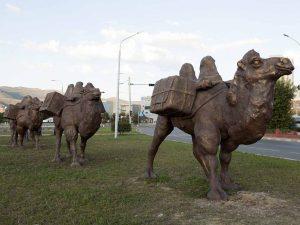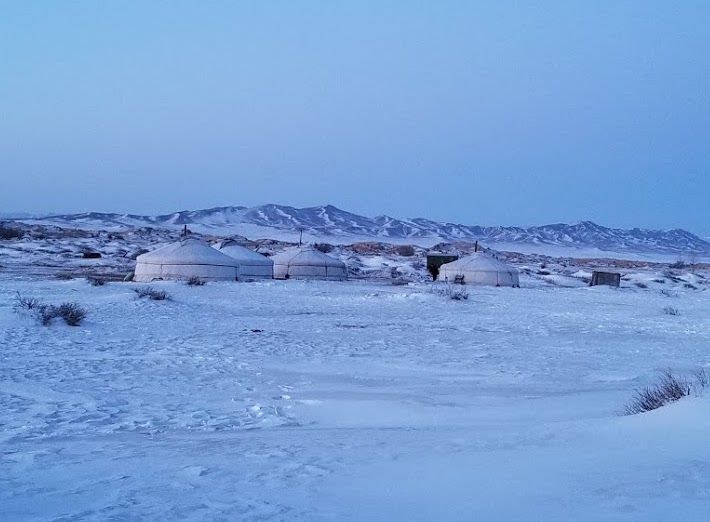Mongolia’s Tea Road
Mongolia’s Tea Road is relatively unknown compared to the famous Silk Road, yet it played a crucial role in connecting China with western Russia via Mongolia. This important commercial route saw camel caravans transporting bricks of tea from China through the Gobi Desert to Urga (modern-day Ulaanbaatar – UB). From Ulaanbaatar, additional overland routes extended south to Beijing and Lhasa, and west to Urumqi in Xinjiang Province. Camels were the primary mode of transportation along these routes.
The Silk Road Complex In Ulaanbaatar

In Ulaanbaatar, near the Bogd Khan Museum in the Khan-Uul district, you can find the Silk Road Complex monument. Initially named “Migration,” the statue was meant to symbolise an inflow of wealth into the city. It was later renamed to represent a caravan of traders, highlighting the historical significance of trade routes like the Tea Road.
A Personal Journey
When I first wrote the notes for this post I was travelling in Morocco with my parents. I was surrounded by the bustling commerce and the unique experience of sipping mint tea (‘Berber whiskey’) amidst the exotic smells of petrol fumes. Less than two weeks later, I traveled to Mongolia, where I swapped mint tea for the traditional Mongolian milk tea, Suutei Tsai. But how did tea originally arrive in Mongolia?
Historical Background of the Tea Road
The Tea Road was officially recognised by a treaty between Russia and the Chinese Qing (Manchu) Dynasty in 1689. This route connected eastern China and western Russia, traversing northward through the Gobi Desert and Mongolia, and then west across the Siberian taiga to reach the major centers of the Russian empire.
|
|
A key part of the early northern route was Zhaniiakou (also known as Kalgan), a mountain pass crucial for horse-trading between the Ming Dynasty and Mongolian herdsmen and the easiest terrain for the transport of goods. This pass remains a vital link today, with both the Trans-Mongolian railway and a major road following this historic path.

Life on the Tea Road
Camels and mules laden with ‘brick’ tea would navigate high passes on the border of China and Mongolia. This method of transport is depicted in early 20th-century photographs. Turuu, my business partner and a modern-day Mongolian recounts how his great-grandfather led a camel caravan across the Gobi to Beijing. These journeys were often undertaken in winter, allowing camels to graze and build fat reserves during the summer. Turuu believes his love for the open road stems from his nomadic heritage and the legacy of the camel caravans.
Danish explorer Henning Haslund-Christensen described the experience vividly:
‘We rolled ourselves in our blankets and slept for the first time on Asiatic ground and under the clear sky of Asia. The next morning, whips cracked, the horses snorted, and the caravan rolled off on a new day’s march. We had to work hard at once, for the caravan mounted that day from 2400 feet to 6400 feet. We all helped, we pulled and lashed, we yelled and shoved … We climbed the remaining three hundred feet, which brought us breathless but exultant to the top of the grass. We stood on the threshold of the wide plateau at the entrance of the land of the nomads. We could not have dreamed of a more captivating entrance to a new country, and when the sun sank upon that day, we felt as though born into a new life – a life which had the strength of the hills, the depth of the heavens and the beauty of the sunrise.’
Following Mongolia’s Tea Road Today
To explore the historical route of Mongolia’s Tea Road, consider our short tour experiences, including three that follow the path of this significant trade route offering a glimpse into the rich cultural and commercial history of this fascinating region.
Jess @ Eternal Landscapes








